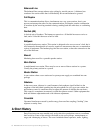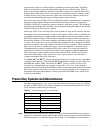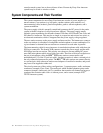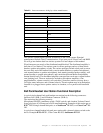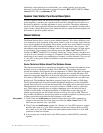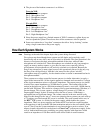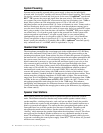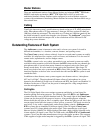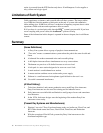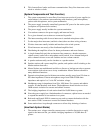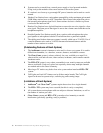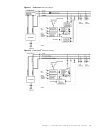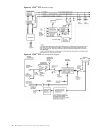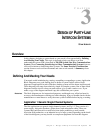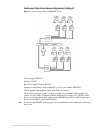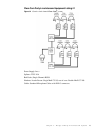
16 Handbook of Intercom Systems Engineering
strobe is powered from the RTS line but only draws 10 milliamperes. It also supplies a
relay closure and a logic signal.
Limitations of Each System
Cable capacitance, resistance, and crosstalk affect all three systems. The longer cables
(over 2000 feet) limit the number of belt packs at the end. A system with cumulative
cables adding up to 10,000 feet will have a reduction in frequency response due to cable
capacitance. Both resistance and capacitance affect crosstalk.
If all you have is a twisted-pair cable, then the RTS
™
system is most useful. If you have
severe coupling with power cables, the Audiocom
®
system will help.
Some of the information in this chapter is repeated in the next chapter, but in a different
context.
Summary
(Some Definitions)
1 A Party-Line system allows a group of people to intercommunicate.
2 “Two-wire” means a communications system where the path is the same for talk and
listen.
3 A balanced line reduces unwanted noise and crosstalk pickup.
4 A full duplex intercom allows simultaneous two-way conversations.
5 The human ear perceives a 10 decibel increase as twice as loud.
6 A belt pack is a user station designed to be worn on a user’s belt.
7 A main station is a multichannel user station.
8 A master station combines a user station and a power supply.
9 Sidetone is a small amount of microphone signal fed back to the user’s ear.
10 Crosstalk is unwanted interference.
(A Short History)
1 Television, theatrical, and concert production crews need Party-Line intercoms.
Party-Line intercoms are also used for training and for industrial crews.
2 Early intercoms were inflexible and limited to small groups of users and sometimes
short distances.
3 In the 1970s, fresh new designs were the beginning of the modern Party-Line
intercoms we use today.
(Present Day Systems and Manufacturers)
1 Principal “two-wire” Party-Line brand names today are Audiocom, Clear-Com, and
RTS. Other brand names are Chaos, David Clark, PortaCom, and Production
Intercom.
2 With the exception of David Clark, present day Party-Line intercoms are the
distributed amplifier type.



